This is a good day to put new strings on my cello. And to make my looms look like stringed instruments. Cello strings are tuned by tightening them until they reach specific pitches. Warp threads are “tuned” by tightening small groups of ends, one group at a time, until all the warp ends are equally taut. When the strings and threads are tensioned as they should be, it’s possible to create beautiful things–music and cloth. The bow and the shuttle turn strings and threads into songs.
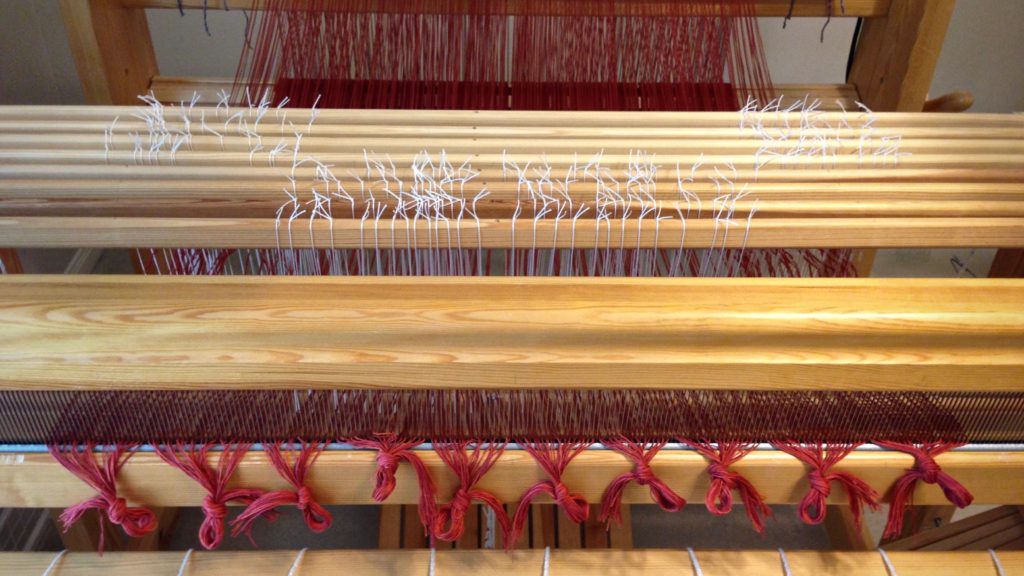
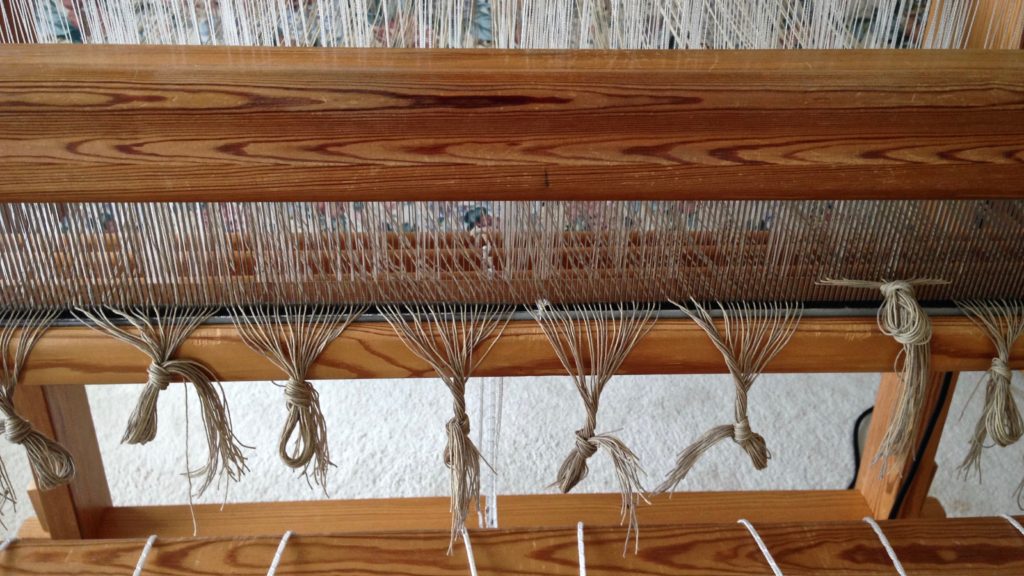
You must accurately hear pitches to tune a cello. You must have a keen sense of touch to evenly tension a warp. These skills can be learned, but only by those who are interested in learning.
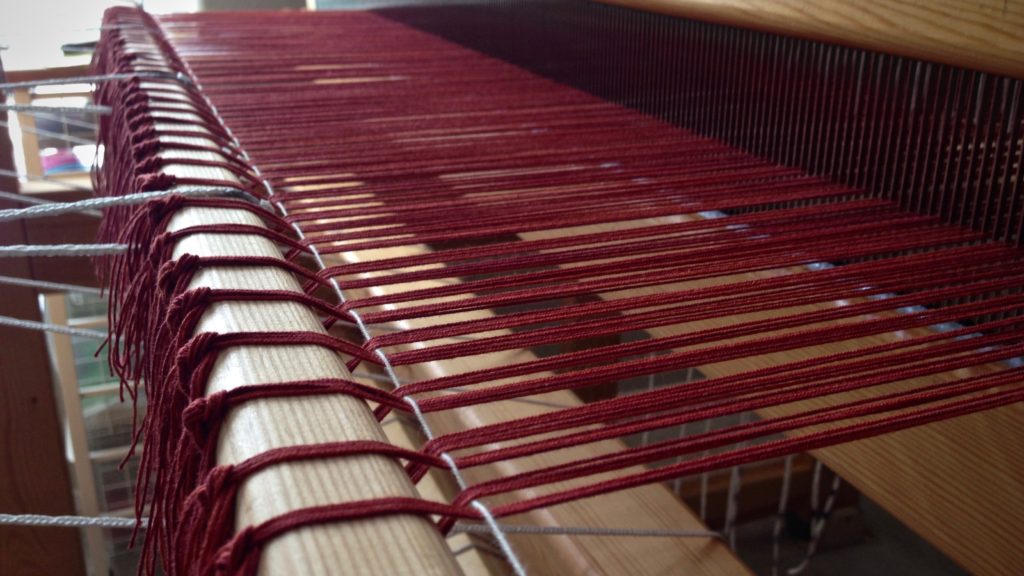
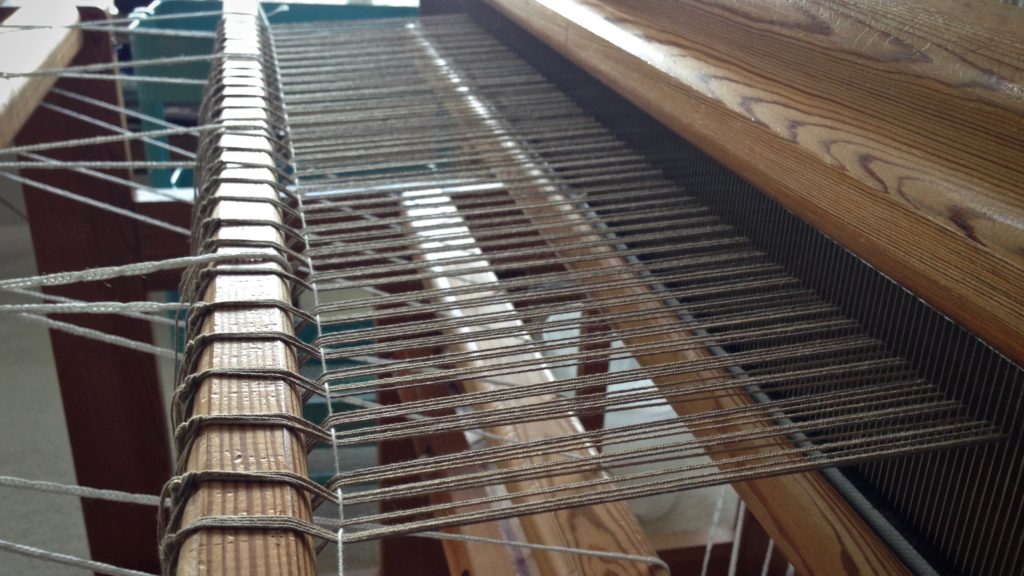
This reminds me of wisdom. Wisdom cannot be bought, and will never make sense to someone who has no interest in it. You can pay for knowledge and instruction, but wisdom only comes to those who have a heart to be wise. Let the music begin!
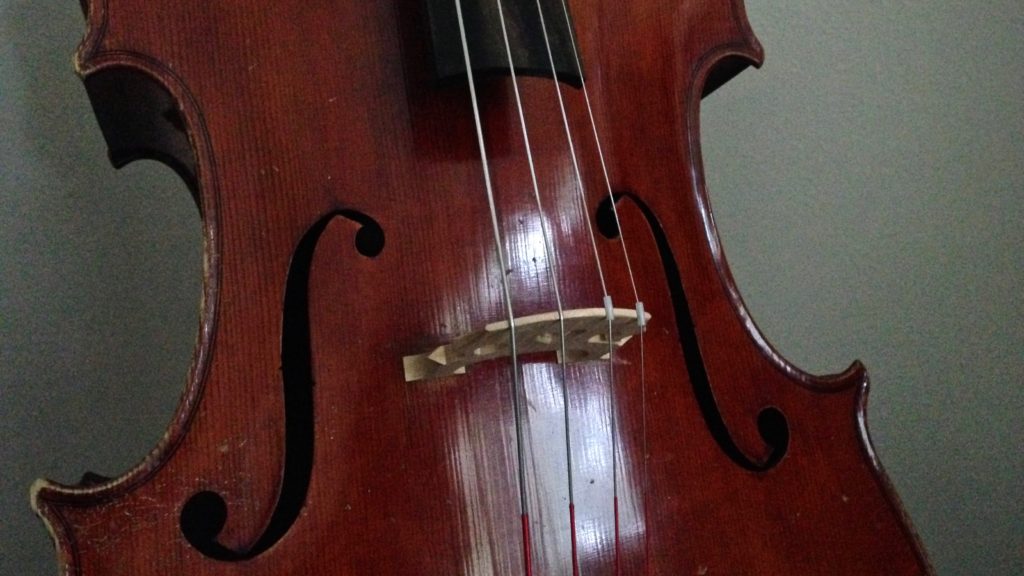
May your heart be wise.
Happy music making,
Karen

Hi Karen,
I have been very interested in this leveling thread and your method of tying on. I take my warps over the bar, split into two pieces, then tie those two pieces together on top. Can a leveling thread be used with this type of tie-on? How do you tie on and tension in the over/under configuration that you use?
Hi Sandy,
For the leveling string to work, the warp ends must alternately go over and under the tie-on bar. I learned this from Joanne Hall and Becky Ashenden. You split the group of ends, with half going over, and half under the tie-on bar. You tension the warp as you tie the ends, not trying to make it really tight, but making it consistent all the way across.
Joanne ties the ends at the front of the bar with a simple bow knot, described in “Learning to Warp Your Loom,” by Joanne Hall. Becky has a different method to tie the ends, described in “Dress Your Loom the Vavstuga Way: A Bench-Side Photo Guide,” by Becky Ashenden.
The leveling string is tied through the holes on both ends of the tie-on bar. First tie one side, then weave the leveling string over and under the tied-on warp ends, pull the string tight, and secure the leveling string to the other end of the bar.
Let me know if you have any more questions,
Karen
Thanks, Karen! I work on a rigid heddle loom, and I think Joanne’s book will probably be best for me.
Hi Karen: I too tie on without a leveling thread and after 45 years of weaving I’ve not had a problem. Just to show how different tieons can work ….I do not use a stick, but tie on to a metal bar that is inside a cloth attatched to the front beam. and Yes there are slits in the cloth.Very different from You, but always a success for me. I guess “different strokes———–same conclusion”. is the lesson. Love, Peace and Joy, linda
Hi Linda,
I wouldn’t be surprised if most people tie on with the method you use. That’s a fine way to do it! It’s interesting how different methods can end up with similar great results.
Karen
Hi Karen,
I’ve recently started weaving on a RHL, and came across your leveling string method by accident, but love the idea. However, I thought I also saw a video showing how it was done, but can’t find now. Did you happen to make one? Wondering if you could please help. Thank you!
Hi Debbi, I think the leveling string would work well on a rigid heddle loom, as long as you have a way to tie it on both sides. On my loom, the tie-on bar has holes in the ends, which make it easy to tie on the string.
I have not made a video about the leveling string. A few books have good descriptions and pictures of using the leveling string: Dress Your Loom The Vävstuga Way, A Bench-Side Photo Guide, by Becky Ashenden; Learning to Warp Your Loom, by Joanne Hall; The Big Book of Weaving, by Laila Lundell.
Happy Weaving,
Karen